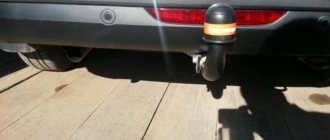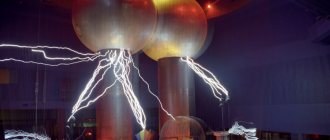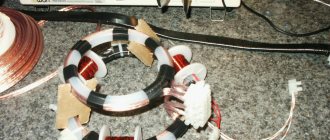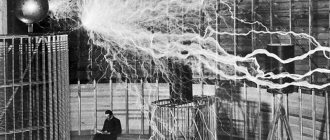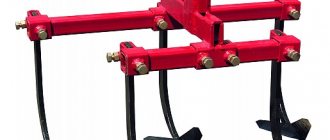6DM18 batteries - battery features
Batteries marked 6DM18 are considered the most popular in the domestic market.
Today they are actively used to complete walk-behind tractors produced by such well-known brands as Zubr, Cascade and Centaur. The good characteristics of this type of battery allow them to be successfully used for both gasoline and diesel walk-behind tractors that are intensively used in regions with bad weather conditions. At the same time, the battery can withstand high loads, does not wear out for a long time and regularly supplies energy to all electrical appliances included in the walk-behind tractor.
The standard sizes of batteries of this type allow them to be installed on walk-behind tractors of any class. There is no need to use adapters or additional fasteners for this. These batteries can withstand a large number of charge/discharge cycles, which, together with high quality, durability and relatively low cost, makes them one of the most popular batteries among buyers in the domestic market.
For walk-behind tractors with belt drive
A special feature of belt drive technology is the absence of a generator. Therefore, the owner of special equipment must independently install electrical equipment using plumbing tools and additional spare parts. They can be removed from a car or other equipment.
The main thing during installation is to replace the generator pulley with one that matches the belt drive of the walk-behind tractor. For greater convenience, the electrical equipment is mounted at the back, after which its functionality is checked and the lighting is connected.
The absence of a generator is a feature of belt drive technology
Lighting options for walk-behind tractor
The choice here is small, it all depends on the model of your walk-behind tractor. Medium walk-behind tractors are usually equipped with a belt drive. There is a pulley on the motor shaft that transmits torque to the box using a belt. Lighting for such walk-behind tractors can be done by installing a generator and connecting a headlight to it.
Heavy walk-behind tractors, for example “Agro”, “Belarus”, “Ugra”, do not have a belt drive in their design. The engine of such walk-behind tractors is connected directly to the box, so installing a generator on heavy walk-behind tractors can be problematic. How to make a light on a walk-behind tractor that does not have pulleys in its design? In such cases, power to the headlight is taken from the battery.
Some walk-behind tractors, usually made in China, are already equipped with standard lighting and even an electric starter. But, as it turned out in fact, they are all equipped with low-quality generators. The light on such walk-behind tractors is very dim, flickering, and is not suitable for illuminating the road at night. If you don’t know how to make a light on a Chinese walk-behind tractor, an example will be given below.
Specifics of lighting selection and installation
Before installing the headlight on the walk-behind tractor, you need to decide on the equipment used. The choice of lamp for lighting depends on the complexity and nature of the work being carried out, as well as lighting requirements.
The more light you need at night, the greater the power of the selected lamp should be.
There are also technical issues when installing headlights. If the generator power is not enough to provide a constant flow of light, 12 V batteries are used. It is recommended to use lightweight equipment so as not to increase the load on the walk-behind tractor.
READ How to Plow a Plow on a Neva Motoblock
From ignition
An alternative option for lighting a walk-behind tractor with your own hands without a generator is connecting to the ignition contacts. Each time after the engine starts, power will appear and the installed headlight will light up. The main disadvantage is the inability to turn off the equipment until the walk-behind tractor stalls.
When considering options for how to install a headlight on a walk-behind tractor, they think about the ease of use of lighting. It is necessary to consider additional elements that will allow you to turn off the lights when parking, regardless of the state of the equipment.
Connection to the ignition contacts - an alternative version of the light for the walk-behind tractor
Possible malfunctions and their elimination
Even if a high-quality generator is installed in the design of the walk-behind tractor, including one made by yourself, it periodically requires repair. If serious faults are detected, it is recommended to contact specialists, however, simple breakdowns can be repaired independently. Most often observed:
- element overheating;
- short circuit due to moisture ingress;
- voltage surges and other malfunctions.
If the product begins to heat up significantly, most likely the problem lies in a malfunction of the capacitor, which will need to be replaced with an analogue of a larger capacity to restore the device to working condition.
Short circuits due to moisture are a serious problem that will require careful troubleshooting and replacement of burnt-out elements after drying. Voltage fluctuations and malfunctions most often require replacing the brushes, after which the generator begins to function correctly.
Making your own generator
Instead of buying a generator, many farmers prefer to assemble it themselves. This approach allows for significant savings, but requires the availability of the necessary materials, tools and skills. The design of the product assumes the presence of the following elements:
- metal case;
- pulley - used to transmit mechanical energy;
- stator and rotor;
- brush assembly, as well as a voltage regulator.
The process of manufacturing the part itself is not complicated and involves the following algorithm of actions:
- Install the electric motor on the walk-behind tractor, making a durable frame that is fixed to the frame of the unit. The motor must be located parallel to the main motor of the device.
- Attach 2 pulleys, one of which should be installed on the standard engine, and the second on the electric one. The dimensions of the parts must comply with the recommendations of the motor manufacturer.
- Connect devices using a special circuit.
You can make a generator for a walk-behind tractor yourself
The operating principle of such an element suggests that the electric motor installed during assembly will generate significantly more energy due to faster rotation. When selecting pulleys, you should remember that their size may be 10-15% larger than the recommended one.
Disc plow: algorithm of actions
A disc plow-hiller is used to prepare even furrows for planting vegetables. Using the drawings, you can control the progress of the assembly and avoid shortcomings.
The manufacture of a disc plow is carried out according to the described scheme:
- Support corner as a basis. It is made from a corner with equal sides, its shelves after cooling should converge at an angle of 700;
- The sock is welded to the corner. The heel is welded to the thrust bar;
- The cheeks are secured to the support corner with loops. The end sides of the cheeks should not rest against each other when opened;
- The rotating mechanism is welded to the stop angle at a right angle.
Finally, you need to adjust the plow cheeks. They are fixed with a vice and adjusted until they are directed in different directions.
How to connect lighting on a walk-behind tractor yourself: step-by-step instructions
Unfortunately, the design of many walk-behind tractor models does not include lighting equipment. But often a headlight on a walk-behind tractor is simply necessary, because it is not always possible to finish work in the field before dark. And when using a walk-behind tractor as a vehicle on the roads, you absolutely cannot do without a headlight.
Some manufacturers specifically sell ready-made kits of headlights, toggle switches and wires separately, thereby providing you with hassle and additional profit for yourself. But you don’t have to spend extra money on purchasing “special” lighting equipment, because connecting the light to a walk-behind tractor with your own hands is easier than it seems at first glance.
First you need to understand the structure of your walk-behind tractor. Typically, the headlight is powered by battery energy, which is charged from a generator and whose power is not always enough for high-quality lighting. In this case, you should not rush and install another additional generator, because this is not always simple, cheap and safe.
The easiest way would be to use a kind of generator built into the engine, consisting of a flywheel with magnets and a lighting coil. To connect lighting to a walk-behind tractor with a single-cylinder engine, you need a lighting coil of at least 3 amperes. It will be able to power a headlight with a power of up to 40 W.
Before installing the headlight on the walk-behind tractor, you need to assemble a single electrical circuit to connect the lighting system to the generator. The drawing below shows in detail all the elements of this circuit.
MOTOR-BLOCKS and motor-cultivators (cultivators)
The best models of walk-behind tractors and walk-behind cultivators are on sale in our store wholesale and retail, as well as on credit at low prices. There are many tasks on a personal plot for which it is better to use a walk-behind tractor rather than primitive garden tools. This small device is otherwise called a mini-tractor, has manual control, and can be equipped with a gasoline or diesel engine with a power of kW. There are also light walk-behind tractors with an electric motor, which are used only for cultivating the soil. The walk-behind tractor is a universal tool that can be used to loosen the soil, control weeds and even transport small loads.
The generator for the walk-behind tractor is an important part of the unit. It converts mechanical energy into electrical energy.
Generator for walk-behind tractor
A powerful walk-behind tractor must be equipped with an electric generator.
The generator for the walk-behind tractor is one of the most important elements; it supplies the headlights with electricity and recharges the battery. The battery is a source of autonomous power; it is necessary, first of all, for the walk-behind tractor to start without much difficulty thanks to the starter, and for recharging electrical appliances in the future. The main function of a 220 Volt generator is to convert mechanical energy into electrical energy.
How to choose the right lighting coil
Often, when using Lifan engines in technology and households, it becomes necessary to connect various electrical appliances. Many craftsmen are trying to use additionally installed generators. But this is expensive and not always convenient. We have to come up with complex designs, adapt pulley and belt systems. This greatly complicates the entire mechanism, and most importantly, the reliability of the entire system is lost. An excellent way out of this situation is a generator built into the engine (flywheel with magnets plus a lighting coil). The Lifan company offers its customers several options for such generators.
The standard coil for Lifan is a 0.6 Ampere (12V) coil for a standard single-cylinder engine and a 3 Ampere (12V) coil for a standard two-cylinder engine. Due to the fact that their power is too low to connect third-party consumers, such coils are only sufficient to start the engine and operate it.
If you want to connect additional useful consumers to the engine (for example, lighting lamps, battery charge, receiver, navigator, etc.), then more powerful coils must be used for these purposes.
In this case, the minimum power for a single-cylinder engine will be a 3 Ampere coil; through it you can connect a lamp up to 40 W. Further, if you need more powerful consumers, then the coil will be 5 Ampere or 7 Ampere. You can also directly connect lamps, for example halogen ones, to them, since the current is not too high, and in this case the relay regulator is not necessary in the circuit. The total power of connected devices when using a 5 Ampere coil increases to 60 Watt, and a 7 Ampere coil increases to 84 Watt. (Everyone probably remembers well from the school physics course how to find the power “P” with the current strength “I” and voltage “U” known to us. We simply find the product of the current strength and voltage P = IxU). All of the above coils produce alternating voltage (AC). Thus, it is clear that lamps and devices need to be selected accordingly.
However, if there is a need to charge the battery installed on the equipment, then you will need constant voltage (DC) at the output. The above coils alone will no longer be enough. Then you will additionally need to install a relay regulator (or rectifier) in the electrical circuit. The same is the case if you already use more powerful coils of 18 Amperes or 20 Amps, and they are usually installed on 188F (13 hp) or 190F (15 hp) single-cylinder engines, or two-cylinder 2V77 (17 hp), 2V78 (21 hp), then for stable operation of the devices you will need, in addition to the coil, to use a voltage regulator relay. In the case of coils more powerful than 7 Amps - always. For this purpose, the Lifan company produces, for example, this relay-regulator (18 Amperes), or this relay-regulator (20 Amperes). However, such powerful coils and corresponding flywheels (plus a relay-regulator) are supplied as spare parts in very limited quantities. Lifan does this deliberately. The main reason for this is that customer modifications (do-it-yourself) are not covered by the manufacturer's warranty. On our website we offer our clients such “pumped up” engines of exclusively original factory assembly and design. All of them are assembled at the Lifan plant, specifically according to the requests of the Russian consumer. And they are fully covered by the entire factory warranty.
Battery powered lighting
You can make light on a walk-behind tractor without a generator by installing a 12 V battery. The battery from a motorcycle, moped or boat is used as a power source. Don't give up on your car battery. If you put a heavy power source on the cultivator, you can solve several related problems - equip the unit with an electric starter and significantly make its body heavier. In addition, it would be useful to be able to illuminate the area at night without the engine running. This function can be useful on a picnic or night fishing.
Installing the headlight on a walk-behind tractor using a battery is carried out in the following sequence:
- Arrangement of the frame for the power source. It is best to use a steel corner for this. The frame should be attached directly to the frame of the motor-cultivator body. After lowering the battery into the niche, it is firmly secured in it using steel straps.
- Attaching a lantern and auxiliary lights. The headlight is placed on the walk-behind tractor so that it illuminates the widest possible sector without blinding the operator or oncoming vehicles. It is better to choose devices with an adjustable beam angle.
- Location of the electrical cable in the corrugation along the body of the unit. Installation and connection of control devices. Tester checking the correct assembly of the electrical system.
- Connecting the wire to the battery terminals, leading the wire into the junction box. Connecting wires to the switch, insulating joints, joints and twists.
In order for the battery capacity to last for a long time, LED lamps must be inserted into the flashlights. They consume a small amount of energy, creating bright lighting.
Reliable circuits
A modern walk-behind tractor is a complex unit consisting of many important elements. One of them is a generator, the function of which is to power the electric battery or lighting devices of an agricultural machine. Let's look at the features of choosing a generator for a walk-behind tractor, installing it and making it yourself. It can be quite difficult for a novice farmer to choose the right generator for a walk-behind tractor. However, not everything is as complicated as it might seem at first glance
The single most important factor you need to pay attention to is the power of the device. Whatever generator you choose for an agricultural machine, its power must necessarily exceed the total power of the loads under which the walk-behind tractor operates
This will allow the device to operate properly under Volt voltage without the risk of surges in the electrical network, and to power all electrical appliances on the walk-behind tractor. Often, owners of walk-behind tractors who have no experience purchase and equip their equipment with generators designed for installation on cars.
DIY headlight installation options
After making the headlights and preparing the tools, they proceed to installing the light on the walk-behind tractor.
Choosing a source of electricity is one of the main tasks when installing a headlight yourself
Step-by-step instructions for execution:
- Conduct wiring from the power source to the headlight, check the operation of the system and the brightness of the light.
- Install the switch in a place convenient for use, and then integrate it into the headlight power circuit. There is only one wire going from the button to the lighting.
- At the final stage, turn off the power supply and proceed to the installation of protective elements, corrugations, as well as securing all parts to the equipment. Without heat shrink and additional means, the lighting may be damaged or fail.
One of the main tasks when installing a headlight yourself is choosing a source of electricity. Usually a generator, battery or ignition is used.
How to make a headlight for a walk-behind tractor?
Many owners of special equipment install headlights of domestic and foreign cars as lighting on the walk-behind tractor. This option is expensive and unreliable. The light coming out is not enough and the system itself will not last more than a few months. As an alternative, they develop a headlight for a walk-behind tractor with their own hands, which allows you to obtain the necessary lighting and power of the equipment.
Step-by-step instructions for manufacturing:
- Buy an old, inexpensive headlight. Equipment from Soviet cars is suitable.
- Remove the glass protection and other elements secured with plastic fasteners from the device.
- Using plaster, pour a dummy headlight, for which the finished material is poured into the device and left until completely dry. After this, you can remove the cast, maintaining its integrity.
- Glass fiber is applied to the resulting template in three layers, each time treating the material with epoxy resin. After processing, the future headlight must dry under vacuum conditions. Many owners install headlights of domestic cars as lighting on a walk-behind tractor.
- Then they start making their own glass. This will require an oven, special slats and fiberglass. It is necessary to make a platform from the slats, which is placed in a preheated oven to 180-200 C°, where fiberglass is placed without a protective film.
- When the material begins to deform, it can be taken out for application to the processed workpiece. After pouring the mold, you need to place the future headlight in a vacuum.
- After complete cooling, the product is sanded using sandpaper.
- The final stage is the installation of electrical equipment and lamp installation.
Electrical diagram
The headlight connection diagram is quite simple and consists of only three main elements:
- power source, including ignition, generator or battery;
- power switch - a simple button that breaks and turns on the electrical power circuit for the lamp;
- a lamp socket to which wires from the power source are connected through a switch.
A fairly simple diagram for connecting a headlight to a walk-behind tractor. For greater reliability, all wires are placed in a special corrugation. The material protects electrical wiring from damage and allows you to secure the equipment so that it does not interfere with the use of the walk-behind tractor.
Necessary tools for work
Before starting work, it is necessary to prepare all materials, including wiring, headlights, corrugation, and also assemble a set of tools:
- soldering iron;
- screwdrivers and wrenches;
- wire cutters and stationery knife;
- electrical tape and heat shrink tube;
- electric drill and mounting materials.
Without electric generator
Another method of connecting lighting is also widespread among operators. Here you can do without using a generator. You will need a 12 volt battery and an LED strip.
In addition to the sources, you must think in advance where this device will be mounted. If you are the owner of a large vehicle, then the ideal solution would be to install the battery between the gearbox and the engine.
Step by step steps:
- Using welding and an iron corner, you need to make a stand for your gel battery. It is mounted on the frame of a mini tractor.
- A battery is installed inside, which is clamped with a pair of bolts and a metal insert.
- Wires are laid from the battery to the power button. All joints must be soldered and insulated with heat-shrinkable tape.
This lighting will be very bright. However, this method of installing headlights has one negative side: a full battery charge will only last for a couple of hours of operation, after which it will need to be recharged again. This is a very significant disadvantage for those who work intensively with a mini tractor.
Using a generator
If the unit is equipped with its own generator, then resolving the issue of lighting arrangement is greatly simplified. You just need to install the flashlight and supply power to it.
To do this you will need the following tools and devices:
- electric drill;
- soldering iron;
- Screwdriver Set;
- spanners;
- wire cutters;
- stationery knife;
- electrical cable;
- heat-shrink tubing;
- headlight, side and turning lights.
READ How to Set Up a Disc Hiller for a Motoblock
Light on the walk-behind tractor.
Installing a headlight on a walk-behind tractor using a standard generator is carried out in the following sequence:
- The bases of the lighting fixtures are screwed to the unit body. It is advisable to place the headlight on the walk-behind tractor on a separate bracket located on the front part with an elevation above the ground of 100-120 cm.
- We install buttons for turning on the flashlight, turning and side lights on the steering column. You should choose devices of increased strength and moisture-proof design. Fixation is carried out with clamps or metal screws.
- The electrical cable is pulled into a corrugated tube. This must be done to ensure that the wiring is protected from moisture, mechanical damage and rodents. The corrugated tube is pulled to the steering column and frame so that there is no sagging.
- The wires are connected to the generator and electrical equipment terminals. The engine is started and the functionality of the lighting system is checked. After this, all twists and joints are isolated.
When idling and at low speeds, the light dims. To ensure constant lighting, you need to use a voltage stabilizer or install a powerful generator.
Electric generators from MTZ tractors and ZAZ cars have proven themselves well.
These devices are compact and can easily find a place on the body of a motor cultivator. To connect a non-standard generator to a walk-behind tractor, you will need to make an additional bracket. It is assembled from a steel angle on the frame of the car (there are many videos available on the Internet with a detailed description of the manufacture).
How to make light from a generator
The easiest way to make lighting for a walk-behind tractor is to use its “native” electric generator. Some manufacturers of motorcycles provide for this possibility and therefore install devices for generating electrical energy with a certain power reserve. It is enough to ensure stable operation of the main electrical devices of the motor unit and power additional electrical equipment, such as direction indicators, headlights, and sound signals.
Connecting light from a standard electric generator is quite simple:
- The power generating device is connected by a wire to a switch mounted on the steering column;
- Wiring is routed from the switch to electrical equipment (in our case, a headlight);
- The wires are placed in a corrugation, which will protect them from mechanical stress and prevent them from dangling and interfering with you while working on the walk-behind tractor.
When the generator has enough power, the headlight shines brightly and steadily; if there is not enough power, the light fades out at low speeds. In this case, the generator is replaced with a tractor one (for example, taken from a MTZ tractor) or a car one.
An electricity generating device from Zaporozhets is perfect for this purpose. The equipment is compact and therefore easily fits in the space between the engine and gearbox. You will first need to make fasteners for the generator. Weld additional metal slats onto the frame and attach a clamp to them - it will fasten the device and securely fix it to the frame.
You can see how to connect an electric generator to your motor unit in the diagram below:
A car electric generator, new or old, has sufficient power reserve and will be enough to provide stable lighting on your walk-behind tractor or snow blower. With its help, you can also solve a number of other problems related to connecting electrical equipment.
Light without battery and generator
When deciding how to make a headlight for their walk-behind tractor, most people make the most technically complex decisions. You can make light without a generator or battery simply, quickly and inexpensively if you use bicycle lights. This option can be used as the main or alternative light source for any motor vehicle: walk-behind tractor, cultivator, lawn mower, snow blower. A properly selected flashlight can also be installed on a motorized dog, tow vehicle or snowmobile.
Bicycle lights have the following advantages:
- no need to lay wires;
- minimum financial investment with high efficiency;
- reliability in all weather conditions;
- having your own charger for portable batteries;
- Possibility of mounting on the steering column using brackets included in the kit;
- Quick removal for use in manual mode or for charging.
It is worth purchasing two bicycle lights. It is advisable to use one for high beams, the second for lighting directly in front of the unit.
Generator electrical connection diagram
When installing and connecting the generator, you must remember that incorrect connection of the electrical circuit will cause a short circuit in the generator winding. To prevent this, you must connect the device strictly according to the instructions in the algorithm below:
- Connect the generator to the electronic unit of the agricultural implement using two wires. The unit itself is equipped with 4 wires, 2 of which are blue - connect the energy converter to them;
- After this you will be left with a black and a red wire. Connect the first of them to the ground of the walk-behind tractor engine;
- The red wire is responsible for the output of the converted voltage, which is required to provide power to all electrical devices of the walk-behind tractor without a battery - headlights and sound signal. If the generator is installed on a walk-behind tractor with a battery, then the converted energy is supplied to the battery and the electric starter of the unit. The video will tell you more about connecting a generator to a walk-behind tractor.
The generator connected in this way operates according to a fairly simple scheme:
The generator installed on the walk-behind tractor generates electrical energy, after which it is supplied to the rectifier present in the electrical unit. The block contains a current regulator and a voltage equalizer, designed to protect the electrical system from voltage surges and control the amount of energy generated.
When starting a walk-behind tractor, its engine transmits torque to the rotor via a belt. During this, the generator begins to generate the required amount of energy and supply it to the electrical unit. Due to the fact that a certain amount of battery energy was spent when starting the engine, all electrical appliances on the walk-behind tractor will receive energy from the unit. As soon as the battery of the unit is charged, it will again become the main source of power for the electrical appliances of the walk-behind tractor. If the battery is discharged again, power will come from the electrical unit. This process is repeated continuously as long as the walk-behind tractor is running.
How to install a generator on a walk-behind tractor - the algorithm in detail
Before installing the generator on an agricultural unit, you should study in detail the structure of the existing element. The generator for the walk-behind tractor consists of the following parts:
- case - in most cases it is presented in the form of a metal box equipped with a front and back cover;
- pulley - this part is designed to transmit mechanical energy from the motor to the generator shaft through the belt;
- stator - the role of this part is played by the usual rewinding of steel sheets assembled in one compact package. In its shape, the stator resembles a pipe inside which the power of the generator is generated;
- rotor - this part has the shape of a steel shaft equipped with two metal bushings. In the area between the bushings there is an excitation winding, the wires of which are connected to slip rings;
- the brush assembly is a plastic part responsible for the proper operation of the generator;
- voltage regulator - this part is responsible for stabilizing the voltage when the load level on the generator changes.
Installing a generator and walk-behind tractor with your own hands takes a lot of time, but by spending it, you will ensure the uninterrupted operation of your agricultural machine. The generator must be connected to the unit in accordance with the electrical diagram, which contains and describes all the connections necessary for installation.
How to make a headlight for a walk-behind tractor with your own hands
Not all walk-behind tractors Neva, Zubr, Centaur and others include a headlight. Therefore, owners who want to make light on them decide for themselves what to do: buy a factory kit with a ready-made lighting system, use a flashlight from faulty equipment, for example, a moped, a light motorcycle, or make a budget option with your own hands or make a homemade light.
If you decide that your unit will have a headlight made with your own hands, then the housing from a burnt “housekeeper” will be quite suitable for this purpose. You will also need to stock up on a small piece of electrical wire, a toggle switch (switch) or a simple switch.
Connecting the headlight to the agricultural implement is very simple:
- First, the toggle switch (switch) is fixed. It is placed in the most convenient and fairly reliable place, for example, on the steering rod of a walk-behind tractor next to the gear shift lever.
- Then the headlight is fixed. This can be done in a specially designated place provided by the manufacturer (usually this “place” is located in front of the engine) or on the steering column. When a stationary headlight is placed in front of the engine, it quickly becomes dirty, and the light from it spreads only along the bottom. For this option, it is better to use a lamp that is movable in several planes, then you can direct the light in the desired direction yourself.
- Next the wire is pulled. It is more convenient to do this from the nearest power source, for example, a 12-volt oil pressure warning lamp located on the steering column of the walk-behind tractor.
- A wire drawn from the power source is connected to the switch, and a cord is pulled from it to the place where the headlight is located. All wires are carefully wound to the steering rod with insulating tape or secured using special clamps.
You can use halogen lamps to illuminate your agricultural machinery, but they quickly heat up and fail. It is better to make lighting using 5 W LED light sources with a small scattering angle, which will save energy and shine brightly and far.
As you can see, making a headlight for a walk-behind tractor with your own hands is absolutely not difficult. And it will be able to work no worse than a “car market” and light your way when you return home along a dark road.
How is the headlight connected to the walk-behind tractor?
Not all walk-behind tractors are equipped with a headlight. Therefore, making lighting on a walk-behind tractor with your own hands,
you need to decide on the appropriate part:
- It can be purchased at a specialized store - it will be a unit with a ready-made system (lighting coil, headlight, wire system);
- It is possible to use a part from old equipment: a moped, a motorcycle;
- The headlight for the walk-behind tractor can be made independently.
To make a headlight, you will need some elements: the body of an old or burnt out “housekeeper”, a small piece of electrical wire, a toggle switch (switch) or a simple switch.
You can connect the headlight to the walk-behind tractor using the following diagram:
- Secure the toggle switch. Its location should be practical and reliable. Optimally - the steering rod of the unit near the gear shift lever;
- Place the headlight on the walk-behind tractor. For this, manufacturers have provided a special place in front of the engine or on the steering column. The stationary lighting element in front of the engine can quickly become dirty; the light from it is directed only towards the ground. Therefore, a movable headlight is more suitable, in which the light can be directed in a certain direction;
- Stretch the wire. This is often done from a nearby power source. For example, a 12-volt oil pressure warning lamp, which is located on the steering unit;
- The wire is located as follows: from the power source to the switch, from the toggle switch to the headlight on the walk-behind tractor. All wiring must be carefully taped to the handle bar with electrical tape or secured with special clamps.
Halogen lamps can illuminate a walk-behind tractor, but their disadvantage is rapid overheating and failure. It is optimal to use light sources of 5 W with a small scattering angle; they consume electrical energy economically, shine brightly and over a long distance.
The proposed videos will help you understand the features of providing lighting for motorcycles.
The described methods allow you to make light and install headlights on walk-behind tractors of the most popular brands: Neva, MTZ, Centaur, Zubr and others. After all, most of them do not have standard lighting.
The question of how to make light on a walk-behind tractor must be decided by everyone who purchased this unit without a standard headlight. Today, most models of domestic and foreign production are designed to work only during daylight hours. And those that have a built-in flashlight do not always provide high-quality lighting. The factory headlight illuminates a narrow sector in front of the car and quickly becomes dirty. Ready-made kits are available for sale that can be installed on the Neva, Plowman, Volgar, Forza walk-behind tractor and other domestically produced units. With average quality, such sets have a high cost. You can save a lot of money if you make the light for the walk-behind tractor with your own hands. With a headlight, the motor cultivator will become much more functional and easier to use. Let's consider options for how to connect a headlight to a walk-behind tractor.
Do-it-yourself ignition light on a walk-behind tractor
This should be done approximately according to the following algorithm:
- Selecting the right headlight for the walk-behind tractor. You can buy a new one on the market, or you can find a completely tolerable old headlight from a moped, car, tractor or other equipment. It goes without saying that the new equipment will shine better, last longer, and you can choose a variety of types, sizes and colors. But if it’s far from the car market, then using an old headlight won’t do any harm.
- Purchase of a toggle switch and wires.
- Install headlights. The best option is the steering bar crossbar. Here the headlight will provide an optimal angle of illumination when working and driving, and will also become less dirty.
- Installation of a toggle switch. It should be secured in an easily accessible place. It's best to mount the switch on the steering wheel, somewhere close to the gearbox.
- Wiring. If the design of the walk-behind tractor provides a place for connecting a headlight, we power the wires here. If not, then the most convenient way to do this is with a 12W oil control lamp. The body of the walk-behind tractor will serve when powered by mass.
- We connect the wires to the toggle switch and the headlight. We secure the wires securely with special clamps and/or electrical tape.
Making front and rear lights for a bicycle with your own hands
Today, purchasing a bicycle light is not a problem. But some are not satisfied with the quality of Chinese bicycle lights, while others are not satisfied with the price.
As a result, cyclists are faced with the question: “How to make a flashlight for a bicycle yourself?” The answer is simple.
Front light made from scrap materials
To make a bright bicycle light with your own hands, first of all, let’s decide on an LED. In our case, the heart of the circuit will be CREE XM-L with a power of 10 W. Its light output of 1000 lm is enough not only to illuminate the road surface, but also to surprise oncoming drivers. To form a narrow beam, you will need a small lens and a mount for it.
As a clamp, you can use a flange from the P213 transistor and part of a plastic tube from a coil. The basis for the flashlight is a heatsink from a computer processor, in which you need to drill two holes for mounting the LED, two for the wires and two for mounting the focusing lens. First, fix the LED, not forgetting to apply thermal paste. Then we thread the wires through the holes and solder them to the plus and minus of the CREE XM-L. The next step is to assemble the focusing part. You may have to experiment with the focal length and reduce the length of the tube a little. Next is the body. You can take spare parts from an old bicycle headlight, or you can make it yourself from foil PCB. The dimensions of the case are selected individually, depending on the shape of the radiator. This design provides space for a driver (its diagram can be viewed in this article) and a microswitch located behind the radiator. The front of the lens is protected by plexiglass, which is held in place by 4 screws (it would be more efficient and ergonomic to fix it with hot glue). We paint the body black and the CREE XM-L LED front light is ready for installation on the bike. All you have to do is stock up on two lithium batteries and you can hit the road.
For walk-behind tractors with belt drive
A special feature of belt drive technology is the absence of a generator. Therefore, the owner of special equipment must independently install electrical equipment using plumbing tools and additional spare parts. They can be removed from a car or other equipment.
The main thing during installation is to replace the generator pulley with one that matches the belt drive of the walk-behind tractor. For greater convenience, the electrical equipment is mounted at the back, after which its functionality is checked and the lighting is connected.
The absence of a generator is a feature of belt drive technology
Homemade tail light from an old reflector
Assembling a tail light on a bicycle with your own hands is also easy. Let's take as a basis an ordinary reflector in a plastic case, which is an integral part of any bicycle. In addition to this, we will need:
The second method involves installing a more powerful radiator with fins that improve heat dissipation. Any radiator dismantled from Soviet equipment or from an old computer processor will be perfect.
We cut it to the required size, try it on and drill two holes for mounting the LED. Then we drill 4 holes in the plastic case with a diameter of 4.5 mm for the ties.
Nylon ties should not be the thinnest, for example, 4 mm by 160 mm, with which we tightly tighten the radiator with the reflector body.
The made lantern is completely sealed, which is both good and bad. On the one hand, such a taillight is completely protected from all weather conditions. On the other hand, the housing made of PCB and plastic prevents the ability to cool the LED.
To reduce thermal losses on the LED, a homemade tail light can be improved in several ways:
- connect the LED to the adjustable driver, setting the mode to half power;
- use a radiator of a different form factor to avoid its complete isolation;
- install several super-bright red LEDs of the smd 3014 type.
